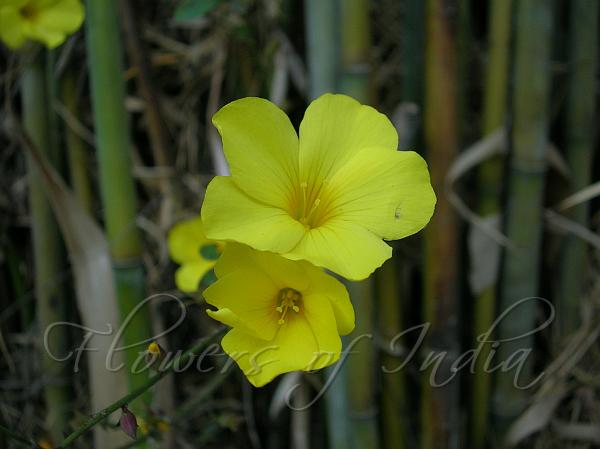|
| Yellow Flax |
|

|

| File size | 659138 |
| Original date | 2/28/06 4:44 PM |
| Resolution | 2048 x 1536 |
| Flash | Flash did not fire, auto |
| Focal length | 8.0mm |
| Exposure time | 1/109s |
| Aperture | 3.2 |
| Focus Distance | |
| Metering Mode | Partial |
| Camera make | NIKON |
| Camera model | E3700 |
| Sensor type |
|
|
|
Photo: |
Botanical name: Reinwardtia indica Family: Linaceae (Linseed family)
Synonyms: Reinwardtia trigyna, Linum trigynum, Linum repens
Synonyms: Reinwardtia trigyna, Linum trigynum, Linum repens
Yellow Flax is an erect to spreading shrub, up to 1 m tall, but is
grazed by animals, and is commonly found only in a prostrate state.
Leaves are elliptic to inverted lance-shaped. Each golden-yellow flower
is up to 4 cm long, with 5 obovate petals which are 2-3 times as long as
sepals. Sepals 0.9-1.2 cm long, about 3 mm broad, distinct.
The name commemorates Caspar Georg Carl
Reinwardt (1773-1854), a Prussian-born Dutch botanist.
The flowers are composed of five petals fused to form the 2-cm tube.
The flowers have fine reddish veins in the throat, such lines are termed nectar
guides or nectar lines, because they typically communicate to pollinating
insects where to go to find a nectar reward.
Yellow Flax is found in the Himalayas, from Pakistan to SW China, at
altitudes of 500-2300 m. It is a common wildflower of north-Indian
hill-stations. It is also found in Western Ghats.
Flowering: November-May.
| Identification credit: Tabish | Photographed in Mussoorie, Uttarakhand & Imphal, Manipur. |
• Is this flower misidentified? If yes,